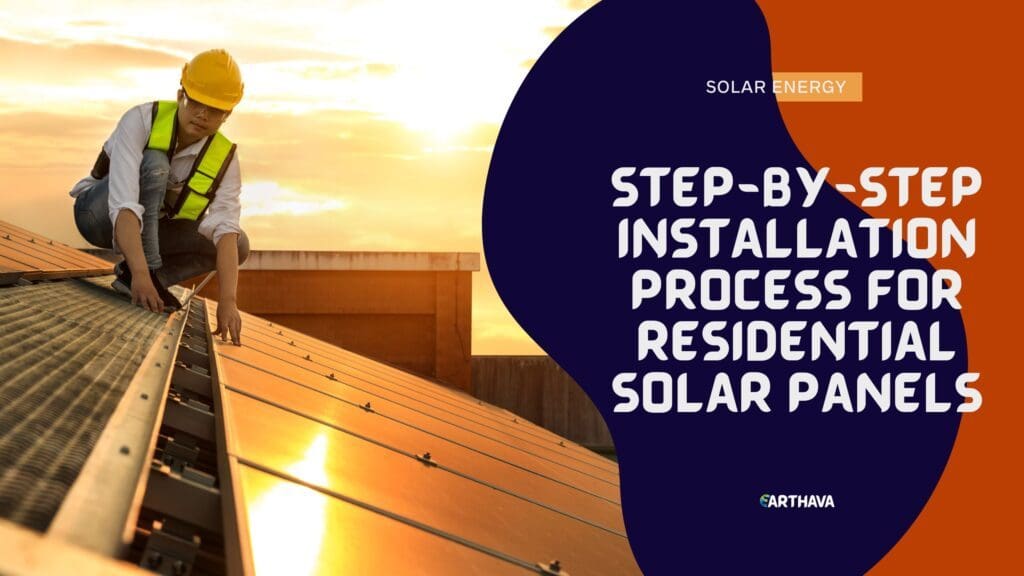Solar-powering your house is not too difficult, especially if you know what you are doing. It’s not just slapping up some modules on your roof, but it is not rocket science either. But where do you start?

Let’s start with the basics
Firstly, let’s talk about your roof. The shape and location of your roof relative to the surrounding cover can make your home more or less effective for non-tracking panel systems. Luckily, there are two dominant theories for how to face your panels that should leave you with a solid option for your solar collectors. In general, if you mount them on a South-facing roof, you will generate more energy during the day.
Related: Want to Buy solar panels? Here are 6 Things You Should Know First
If you are being compensated at a fixed rate by the kilowatt-hour, this might be the optimal solution. Over recent years, it has also been found that while West-facing arrays tend to collect slightly less energy overall, they collect it more during peak hours of energy consumption, thus benefitting the energy grid as a whole. As time goes on, energy collection schemes will likely change to incentivize this practice. Panel systems pointing toward the North are almost completely ineffective and, for this reason, you will rarely see them in nature.
The roof’s angle is another issue you need to pay attention to: the best roofs are inclined at an angle as close to the area’s latitude as possible. This will ensure that most of the solar energy is absorbed by the panels. Another thing to take into account is shade. Try to install the solar modules in areas that will never be shaded by trees or other buildings. Every hour of shade will make your panels less effective, especially during spring and autumn, when the sun is less potent.
What type of solar collection system is best for you and how large should they be?
There are two types of solar collection systems for homeowners: photovoltaic panels (abbreviated as PVs) and solar thermal collectors (abbreviated as STCs).
Related: Solar Water Heater Systems For Homes
The difference between these two systems is simple: PVs provide power, in the form of electricity, while STCs heat water with the help of direct or indirect solar radiation. As a homeowner, you may want to install both types of solar collection systems for your home to increase the energy-related benefits and reduce costs in the long run.
Solar electricity production for PVs depends vastly on the weather, and you may find it helpful to educate yourself on the weather patterns in your area to better predict when your system will generate more or less energy.
Related: Solar Panel Kits For Homes
You can find monthly averages for sunlight, cloudy or rainy days, as well as average humidity levels and mean temperatures throughout the year. Next, the size of the solar collection panels depends on your average utility bill, both for PVs and STCs. In general, the larger the surface area of your system, the better off you are.
Should you go for off-grid or grid-tied solar collection systems?
As soon as you install the PVs on your roof, the electricity starts flowing into your system and you will have two choices: you either use the electricity only in your building (an off-grid system) or you sell it back to the electricity service provider (a grid-tied system).
If you choose to sell the solar electricity back, you will see your electric meter run backward, reducing your utility bills dramatically. Also, you will sell the energy during the highest-yielding summer months, when energy prices are higher, and fund credits for the winter months, when you will use grid power again. This way, you will only pay for a yearly net power usage, which will be an average of the hot and cold months.
If you go for an off-grid solution, depending on the quality and the size of the solar collection systems, your house will be able to provide anything from 75% to 100% of its energy needs, both electricity and hot water. This will result in huge savings, especially when considering that energy costs tend to rise over time.
Related: How Much will Solar Panels Save you?
With a little thought and planning, you can use residential solar power to considerably lower your costs. There are a few things to consider to optimize your solution but with the falling costs of the technology as well as the overall ease of maintenance, investing in solar power for your home is an easy win. What’s more, many solar power specialists can help you choose the best solution for your home, and technicians to help you install it.


